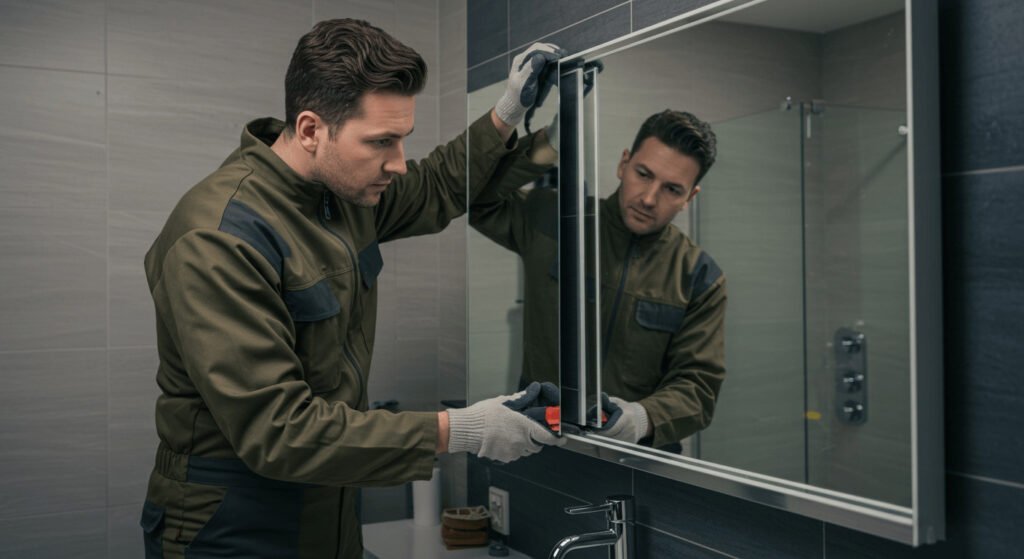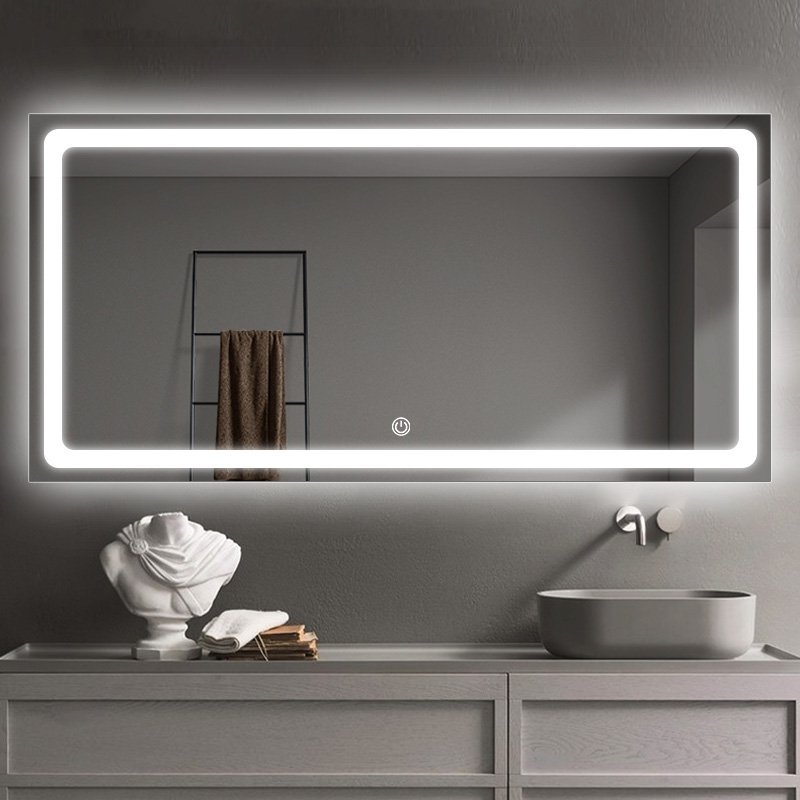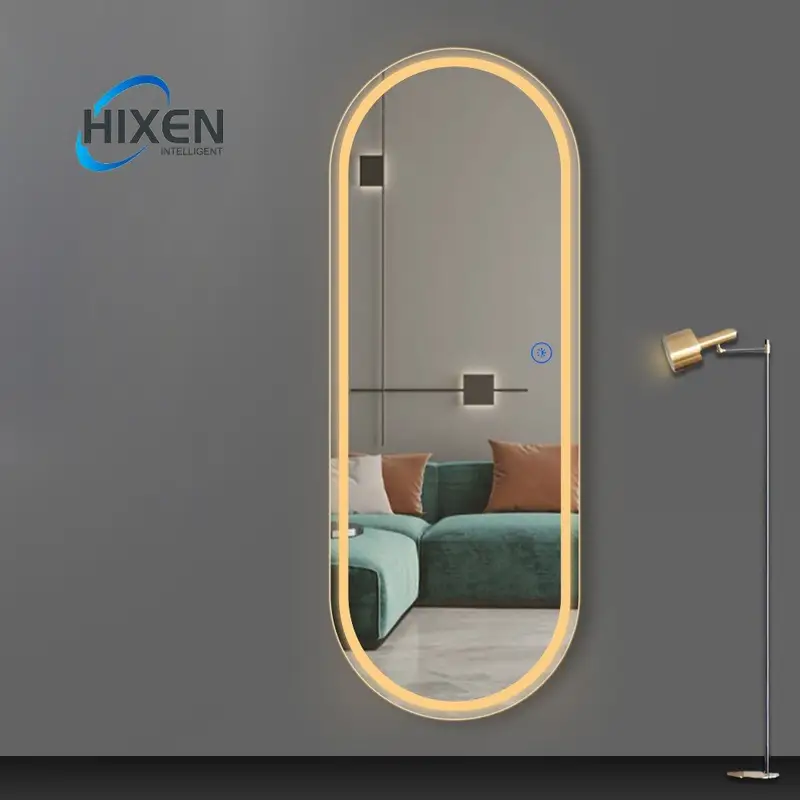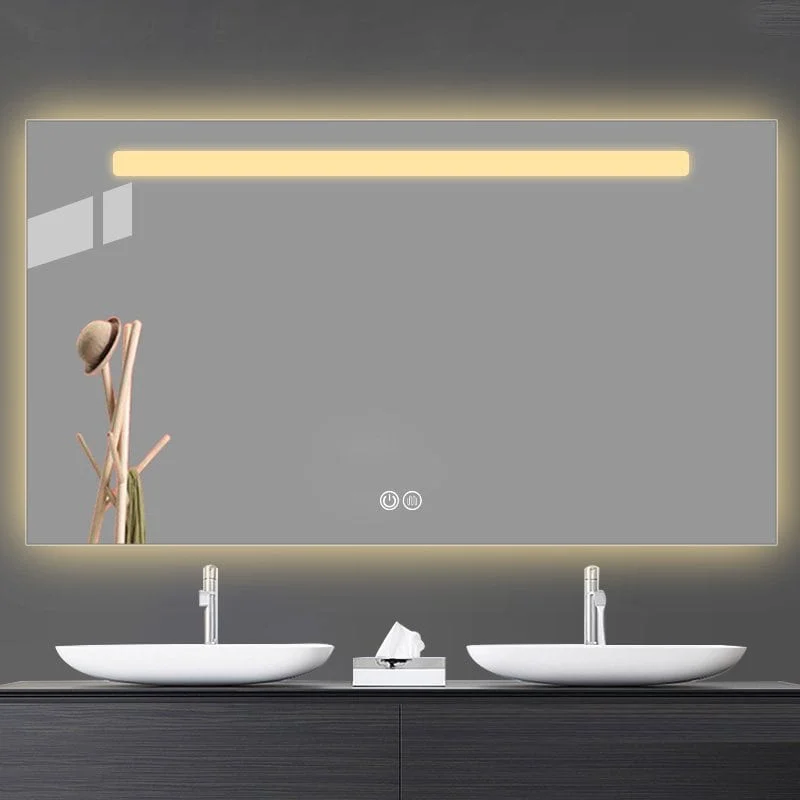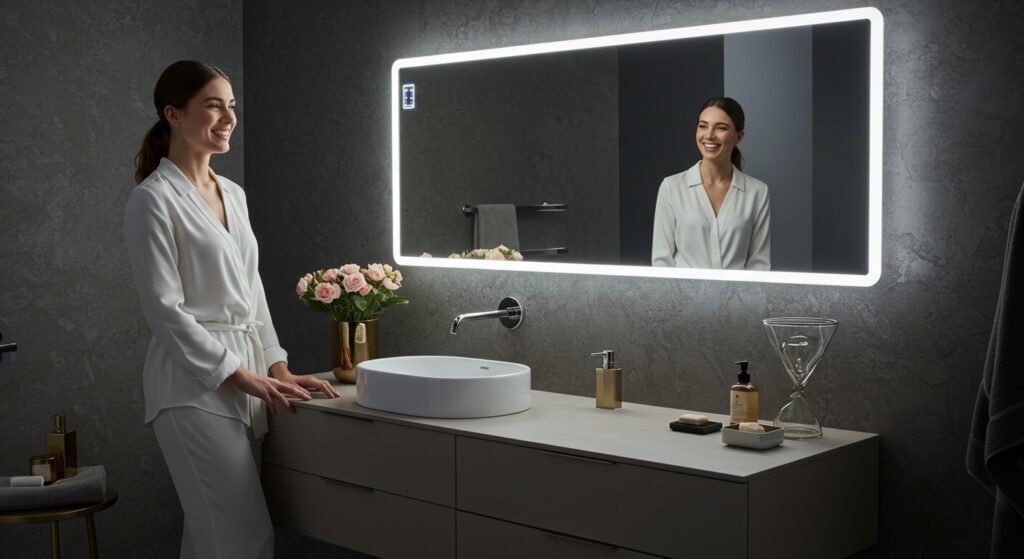|
Получение вашего Троицкий аудио Игрок готов ...
|
We use mirrors every day, but we don’t know how they work. Так, how does mirrors work?
The reason a mirror works the way it does is that the light is reflected in a very orderly way. When light rays hit the smooth, polished surface of the mirror (glass coated with aluminum or silver, обычно), they bounce back at the same angle as they came in—this is called specular reflection. Since the surface is flat and smooth, the light doesn’t scatter; instead, it “knows” where it came from and will be reflected in an orderly way, allowing your eye to see a clear, sharp image.
Standard explanation:
- Light strikes the mirror surface.
- The reflective coating (silver or aluminum) bounces the rays back.
- The angle of reflection equals the angle of incidence.
- Your eyes perceive the rays as coming from behind the mirror, forming a virtual image.
Key point: Unlike rough surfaces that scatter light, a mirror’s polished surface reflects light consistently, creating clear images.
LED mirrors combine reflective glass surfaces with integrated LED light strips that emit uniform, adjustable lighting around the mirror perimeter or behind the glass. These modern lighted mirrors for bathrooms utilize energy-efficient LED technology, electronic controllers for dimming and color temperature adjustment, and often include smart features like defogging systems, Bluetooth connectivity, and touch controls for seamless operation.
Understanding how these sophisticated bathroom vanity mirrors work will help you make informed decisions for your lighting needs.
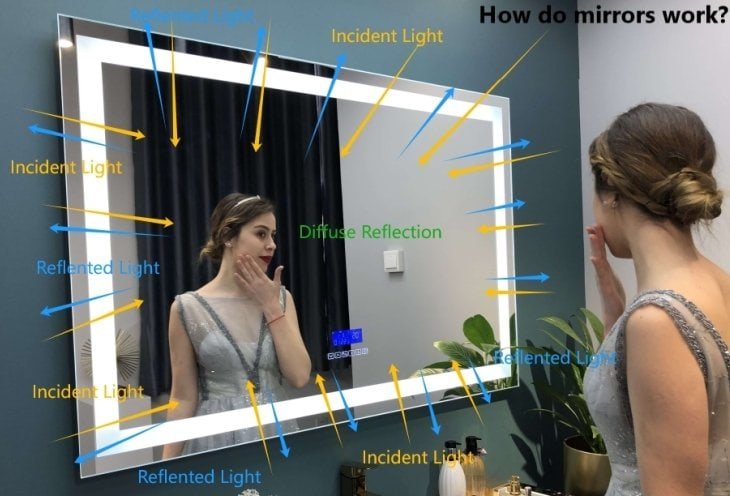
How Do Mirrors Reflect
The primary concept behind all glass mirrors involves a thin metallic layer deposited on the back surface of transparent glass. When light rays strike this shiny surface, they bounce back at the same angle that they hit, resulting in a virtual image that appears to be behind the mirror. This action takes place because the metallic layer (обычно серебряный или алюминий) creates a smooth, super-reflective surface that redirects the incoming light waves without scattering them.
Traditional bathroom mirrors and modern LED bathroom mirrors both rely on this same basic reflection principle. The reflective coating ensures that images appear clear and undistorted, while the quality of the glass determines the overall clarity of the reflection.
The reflection process that you see takes place through “specular reflection,” where the light waves maintain their parallel arrangement after they bounce off the smooth metallic surface. That results in a sharp, clear image that accurately represents the objects in front of the mirror. Whether it’s a bathroom vanity mirror or any other type of mirror, the better the glass and the more precisely the coating process takes place, the less distortion you will see with your eyes.
How Do Mirrors Work Physics
The reason a mirror works is because of the fundamental law of reflection, which states that the angle of incidence equals the angle of reflection. As light travels from an object to your eye via the mirror, this angular logic plays out, creating the illusion that the image you see in the mirror actually exists behind the mirror.
Light behaves as electromagnetic waves that interact with the mirror’s metallic coating through a process called specular reflection. The smooth surface of a quality bathroom mirror causes all light rays to reflect in the same relative direction, preserving the spatial relationships between different parts of the reflected image.
The laws of physics are the same for a basic framed wall mirror with lights and a high-tech LED vanity mirror that does everything except pour your coffee. Однако, when you get into lighted vanity mirrors for bathrooms, you have to consider how the light is distributed and how you control the color temperature of the light.
The LED light strips are admit ting photons at certain wavelengths. These combine with the reflected ambient light in the room to give you the best lighting possible. In advanced LED mirror products, you’ll see optical diffusion materials in play to make sure that the light is evenly distributed across the entire mirror and that you don’t have any spots or shadows to mess up your visibility.

How Do Mirrors Reflect Images
The process that creates a mirror image is that light from each point on an object goes out in all directions, and the mirror collects and redirects some of that light back toward your eye. Your brain takes the pattern of light reflecting off the mirror and interprets it as a virtual image that appears to be the same distance behind the mirror as the object is in front of it.
The quality of image reflection depends on several factors including glass thickness, surface smoothness, and coating uniformity. Premium lighted bathroom mirrors use low-iron glass to minimize color distortion and ensure accurate color representation.
Modern LED bathroom mirrors maintain the same high-quality reflection standards while adding integrated illumination systems. The LED components are carefully positioned to avoid interfering with the reflective surface, typically mounted around the perimeter or behind translucent sections of the mirror.
Backlit mirrors accomplish this by using a small portion of the glass as a diffusion surface for the LED light, but keeping the rest of the glass as a mirror so you can see yourself clearly. This way, you get the best of both worlds—not only a clear, crisp reflection, but also optimal light for applying makeup or doing whatever it is you do in front of the mirror.
How Does Mirrors Work for Kids
The mechanics of how mirrors work get simple when you explain it in terms of everyday experiences kids can relate to. The way to explain it to a child is that the mirror is like the perfect bounce-back system. If you think about light like it’s a ball, it goes out and then comes back in at just the right angle. So when you look in a bathroom mirror, the light bounces from your face to the shiny surface behind the glass and then back to your eyes.
Children can observe this principle by noticing how their reflection moves exactly as they do, maintaining perfect synchronization with their movements. The shiny coating on the back of the glass acts like a super-smooth surface that sends light back without mixing it up.
LED mirrors add another layer of fascination for young users through their interactive features and bright, even lighting. Many lighted vanity mirrors include touch controls that children find engaging, while the consistent illumination helps them develop good grooming habits.
I’ve noticed that the antifog features in LED bathroom mirrors also provide educational opportunities. Kids can watch as the mirror surface clears up on its own, which is just a demonstration of how heating and condensation work. Some small bathroom mirror designs incorporating LEDs have color-changing features. Children can play around with the color changes and see how different lighting conditions affect the way things look in the mirror.

Как делаются зеркала
The manufacturing process for contemporary mirrors begins with the use of high-quality float glass. This glass goes through an extensive inspection for surface defects as well as optical clarity. It gets cleaned extremely well with special solutions to make sure there aren’t any contaminants that might cause problems with the reflective coating.
Затем, either through a chemical silvering process or a vacuum deposition process, the manufacturers put a thin layer of silver or aluminum on the glass to create that reflective surface where you can see a nice, sharp image.
The manufacturing process for LED mirrors involves additional complexity, incorporating electrical components and smart technology integration. Manufacturers must carefully design the LED placement to ensure uniform light distribution while maintaining the mirror’s primary reflective function.
| Manufacturing Stage | Traditional Mirror | LED Mirror |
|---|---|---|
| Glass Preparation | Float glass cutting and polishing | Low-iron glass with electrical channel routing |
| Reflective Coating | Silver/aluminum application | Premium coating with light transmission zones |
| Component Integration | Protective backing only | LED strips, controllers, датчики, and wiring |
| Quality Testing | Reflection clarity testing | Electrical safety, light uniformity, and durability testing |
LED bathroom mirrors require specialized manufacturing techniques to integrate lighting components without compromising structural integrity. The process includes precision cutting for LED channels, waterproof sealing for bathroom environments, and extensive electrical testing to ensure safety compliance.
Advanced lighted vanity mirrors for bathroom use also have to deal with things like defogging elements, and those demand precise temperature control systems and unique heating element installation. Quality mirror manufacturers put their products through a lot of testing to make sure they perform as advertised and that they’re safe from an electrical and optical performance standpoint. These extra tests guarantee that each LED light mirror vanity meets the rigorous quality standards for residential and commercial applications.
What Are the 4 Rules of Mirrors?
The four fundamental rules governing mirror use and installation ensure optimal performance and safety in bathroom environments. Первый, proper mounting height positions the mirror center at eye level for primary users, обычно 60 к 65 inches from the floor for standard bathroom vanity mirrors. Второй, adequate clearance around the mirror allows for comfortable use and maintenance access, with minimum spacing requirements varying based on mirror size and surrounding fixtures.
These installation principles apply to all mirror types, from basic rectangular bathroom mirrors to sophisticated LED vanity mirrors with integrated lighting systems. Proper adherence to these rules ensures both functionality and safety in bathroom environments.
The third rule addresses electrical safety for lighted bathroom mirrors, requiring proper GFCI protection and appropriate electrical connections that meet local building codes. Moisture resistance ratings must match bathroom zone classifications, с IP44 or higher ratings recommended for areas near water sources.
The fourth rule emphasizes structural support, ensuring that wall anchoring systems can safely support the mirror’s weight, including additional components in LED bathroom mirrors. Modern mirrors for bathroom use, especially with all the different electronic features added, can weigh a lot more than a traditional mirror. This means the mounting system needs to be robust and well-distributed across wall studs. When you start getting into these large backlit mirrors or wall mirrors with lights, which include heavy transformers and control systems, professional installation becomes even more important.

How Can You Tell if It’s a Two-Way Mirror?
Identifying two-way mirrors requires understanding the fundamental differences between standard reflective surfaces and surveillance glass. The quickest way to tell is to use the fingernail test. You put your fingernail against the mirror and observe the gap between your nail and its reflection. In a regular mirror, you’ll see a gap, which is the thickness of the glass. In a two-way mirror, you won’t have that gap. The image of your fingernail in your nail will be touching because the reflective material is on the front surface of the glass.
Professional verification involves examining the mirror’s mounting and surrounding environment for signs of observation equipment or unusual installation characteristics that might indicate surveillance purposes.
Modern LED bathroom mirrors and lighted vanity mirrors eliminate concerns about two-way mirror usage through their obvious electronic components and integrated lighting systems. The presence of visible LED strips, control panels, and electrical connections clearly identifies these units as standard reflective mirrors with added functionality rather than surveillance equipment.
Good manufacturers of bathroom vanity lights and LED mirrors will spell out exactly what you’re getting when you buy their mirror. They will tell you what components are included, such as backlit mirrors and defogging pads. They’ll also tell you the thickness, weight, and everything else so you can be confident that when they ship you an LED mirror, you’re not going to get a two-way mirror. The reason is because the thickness and the weight of a LED mirror are much greater due to all the electronics in it.
Why Shouldn’t You Put Two Mirrors Facing Each Other?
Putting two mirrors opposite each other also creates a bunch of problems. If you’ve ever seen two mirrors opposite each other, you get that tunnel of reflections. That’s really not something you want in a bathroom. It’s a distraction and could potentially cause some visual discomfort or disorientation because your brain doesn’t know what to look at. Также, having all those reflections around you could give you a false impression of your appearance, such as how your makeup looks or how the colors in your hair are showing up as you’re standing there getting ready.
The optical phenomenon occurs because light bounces back and forth between the parallel surfaces indefinitely, creating progressively dimmer images that extend into apparent infinity. This effect becomes more pronounced with high-quality mirrors that have superior reflective coatings.
LED bathroom mirrors and lighted makeup mirrors compound these issues when positioned opposite each other, as the integrated lighting creates additional complexity in the reflection patterns. The LED illumination bounces between the mirrors along with the visual reflections, potentially creating glare, hotspots, or uneven lighting distribution that defeats the purpose of controlled illumination.
In high-quality modern bathroom mirror designs, we have anti-parallel mirrors, which could be two mirrors at an angle, side by side, or one in a different plane than the other. Builders and architects can also adjust the angles of the mirrors so that they do not reflect into each other and create that loop.
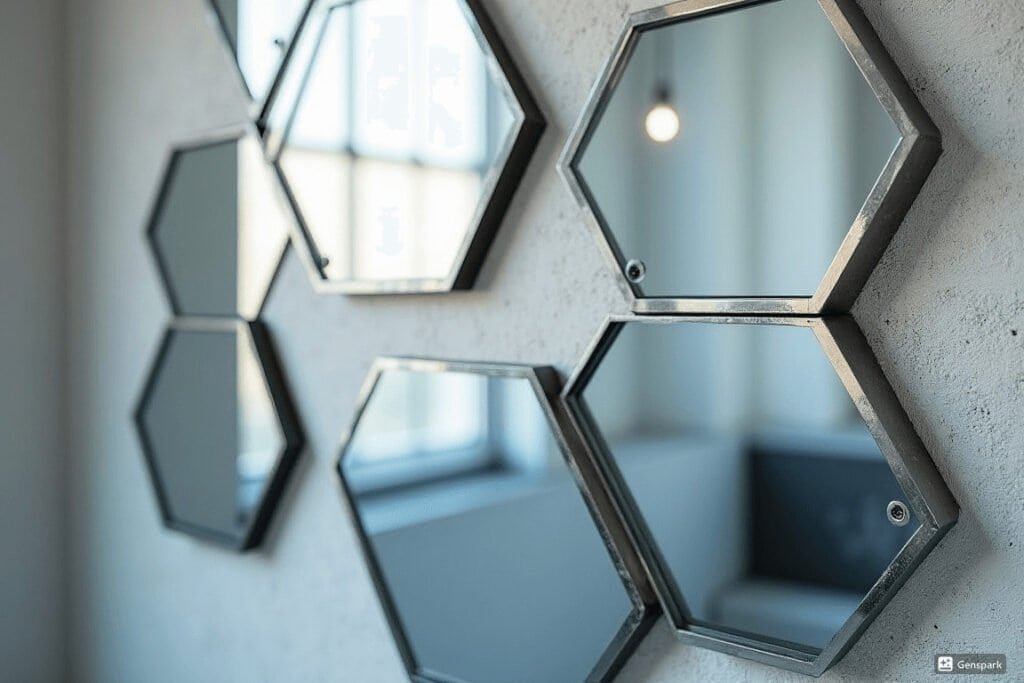
What Should You Consider When Choosing LED Mirror Suppliers?
Supplier evaluation requires comprehensive assessment of manufacturing capabilities, quality control systems, and technical support infrastructure. Established LED mirror manufacturers demonstrate their expertise through relevant certifications, including ISO 9001 quality management systems, electrical safety certifications, and environmental compliance documentation. Кроме того, suppliers should provide detailed technical specifications for their lighted bathroom mirror products, including LED lifespan data, color temperature ranges, and energy consumption metrics.
Manufacturing capacity and customization capabilities distinguish professional suppliers from basic resellers, particularly for projects requiring specific dimensions or integrated features in vanity mirrors with LED lights.
| Evaluation Criteria | Key Requirements | Quality Indicators |
|---|---|---|
| Сертификаты | CE, UL, FCC, IP rating compliance | Third-party testing documentation |
| Technical Capabilities | Custom sizing, smart feature integration | In-house engineering and R&D facilities |
| Контроль качества | Batch testing, warranty programs | Comprehensive QC documentation and processes |
| Support Services | Technical assistance, logistics coordination | Dedicated export team and communication systems |
Professional LED mirror suppliers maintain comprehensive quality assurance programs that include incoming material inspection, in-process testing, and final product validation before shipment. These suppliers typically offer extended warranty periods for their LED bathroom mirrors and provide technical documentation that includes installation guides, maintenance procedures, and troubleshooting resources.
Supply chain reliability becomes crucial for bathroom vanity mirrors and modern lighted mirrors for bathrooms, as project delays can significantly impact construction schedules. Experienced suppliers maintain adequate inventory levels and provide realistic delivery timelines that account for international shipping requirements and customs processing.
How Do LED Mirrors Compare to Traditional Lighting Solutions?
LED mirror technology offers significant advantages over conventional bathroom lighting configurations in terms of energy efficiency, долголетие, and illumination quality. Traditional bathroom lighting typically relies on separate overhead fixtures or vanity lights that create shadows and uneven light distribution, while integrated LED bathroom mirrors provide direct, shadow-free illumination precisely where needed. Energy consumption comparisons show LED mirrors using 70-80% less electricity than equivalent halogen or incandescent lighting systems.
The integrated approach of lighted vanity mirrors for bathroom use eliminates the need for separate lighting fixtures, reducing installation complexity and maintenance requirements while improving overall aesthetic appeal.
LED technology in backlit mirrors and light up vanity mirrors provides superior color rendering compared to traditional fluorescent or halogen alternatives, ensuring accurate color representation for grooming and makeup applications. The adjustable color temperature capabilities of modern LED vanity mirrors allow users to customize lighting conditions from warm ambient settings to bright task-oriented illumination.
Longevity comparisons favor LED mirrors significantly, with quality LED components lasting 50,000 hours or more compared to 1,000-2,000 hours for traditional incandescent bulbs. This extended lifespan reduces replacement costs and maintenance interruptions, making LED bathroom mirrors particularly valuable in commercial applications or hard-to-reach installations where changing bulbs requires professional service.
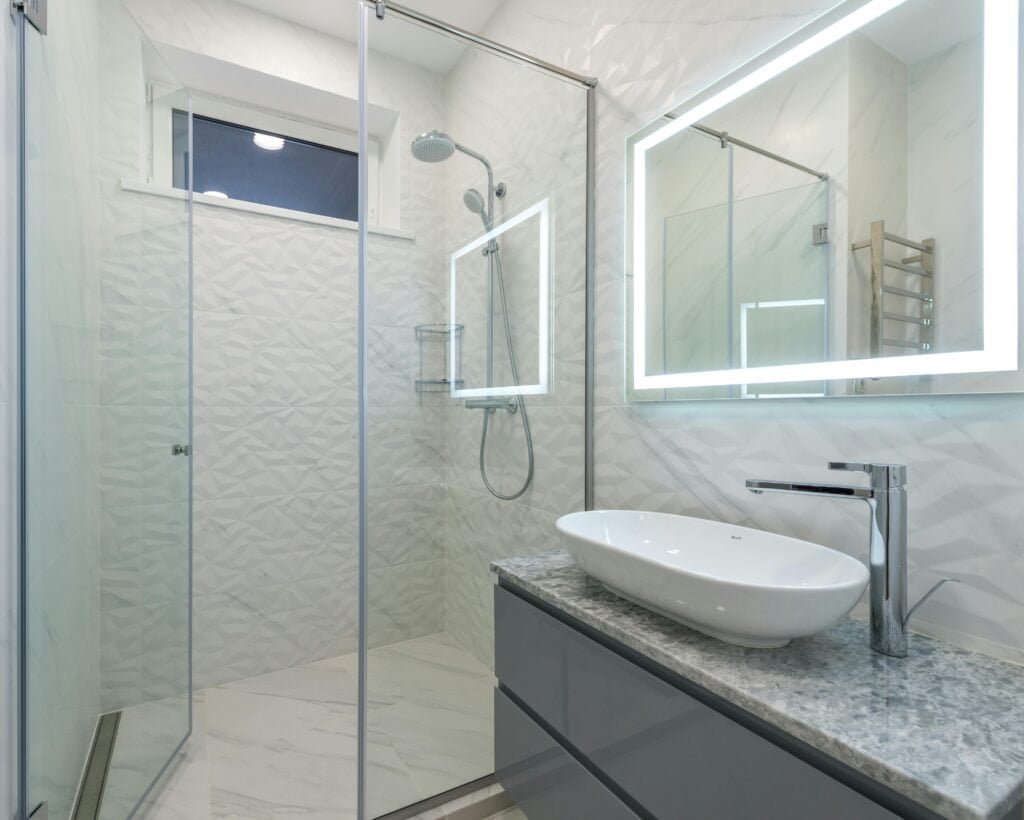
Заключение
LED mirrors represent the evolution of bathroom lighting technology, combining traditional reflective functionality with advanced illumination systems that address modern user needs. Understanding their operation principles enables informed selection of lighted bathroom mirrors that provide optimal performance, energy efficiency, and long-term reliability for any bathroom environment.
- Чтобы узнать, как выбрать правильное зеркало в ванной, нажмите здесь.
- Чтобы узнать, как установить зеркало выбирать здесь.
- Чтобы узнать, как выбрать зеркало правильного размера, нажмите здесь.
- Чтобы узнать, как изготовлены зеркала, нажмите здесь.
- Нажмите здесь, и вы узнаете, почему мы выглядим лучше в зеркалах.
- Нажмите здесь, вы узнаете о вершине 10 светодиодные производители зеркала для 2024.
- Нажмите здесь, чтобы узнать, почему мой тщеславный зеркальный свет не включается?
- Узнайте, какой рост должен быть зеркало в ванной? Кликните сюда
- Нажмите здесь, если вы не знаете, как почистить зеркало
- Чтобы узнать, как закрепить зеркало датчика сенсора, не работает, нажмите здесь
- Выяснить 10 Общие светодиодные проблемы с зеркалом в ванной комнате нажмите здесь

